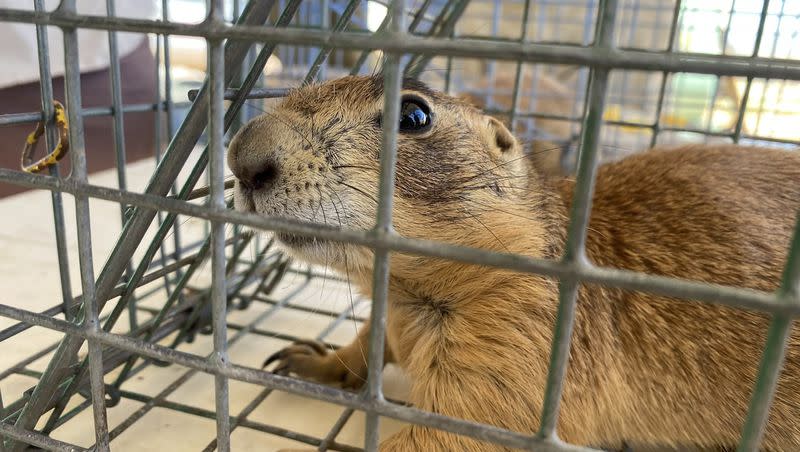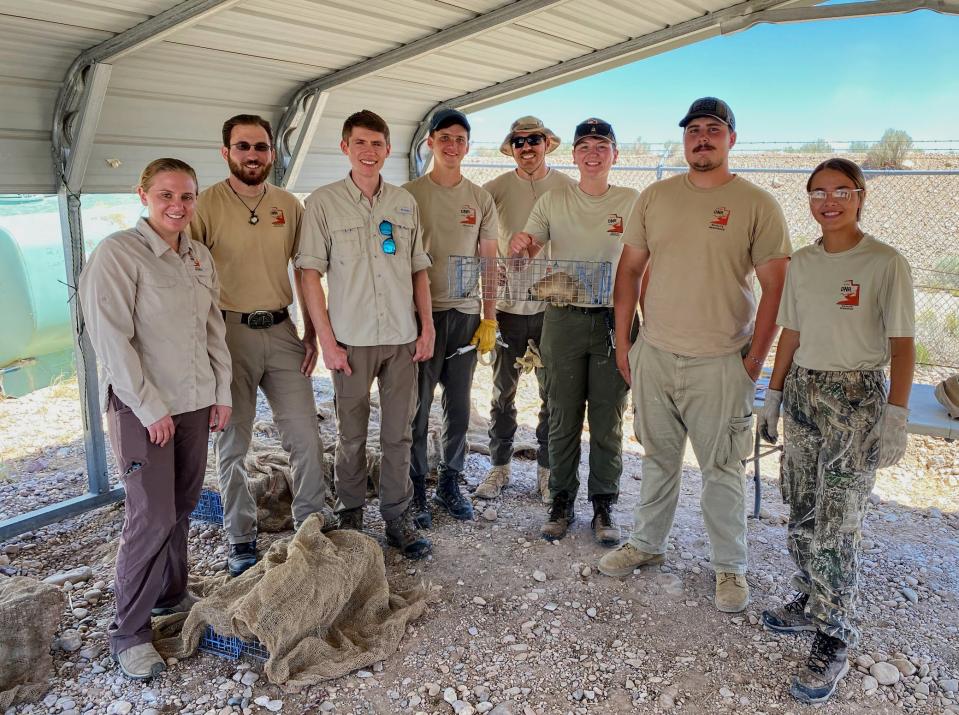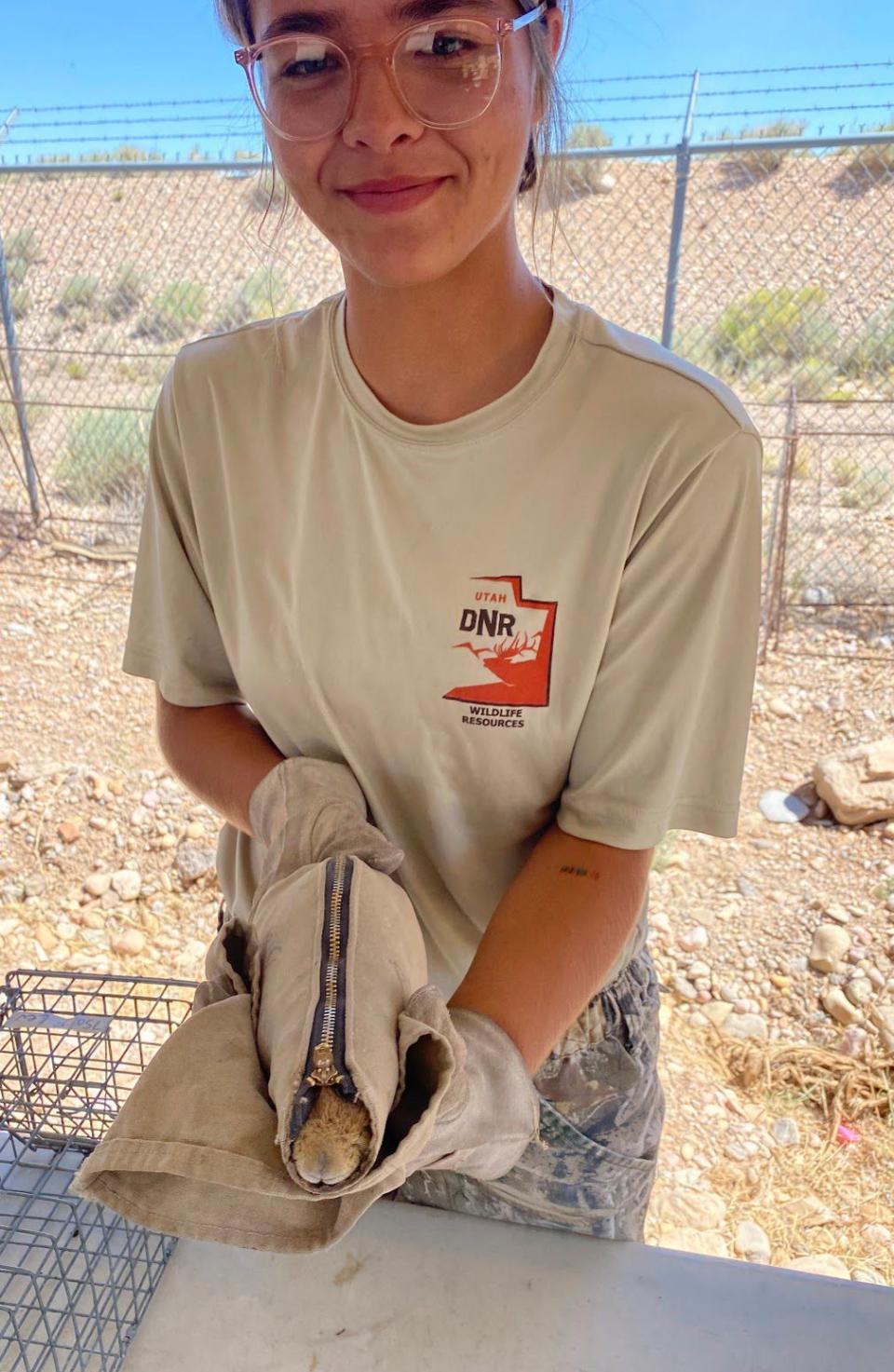Utah prairie dog flourishing again, thanks to a little help from its human friends

According to a national group called NatureServe that looks out for America’s critters, a century ago there were 95,000 Utah prairie dogs burrowed into the counties in southwestern Utah.
Fifty years later, in 1973, there were less than 3.000 and they were fading fast.
It had been a tough half-century. Civilization was the bane of the prairie dogs’ existence. Literally. If farmers weren’t shooting them or poisoning them, developers were building subdivisions over them.
And they couldn’t move. That’s a peculiarity of prairie dogs. They do not roam. Every species stays where it is. Which is why the Utah prairie dog is called the Utah prairie dog. It is the only mammal endemic to Utah that can’t be found anywhere else.
It might be the late Utah prairie dog if the Endangered Species Act hadn’t been created in 1973 — enacted to save mammals facing extinction like the bald eagle, whooping crane, buffalo … and Utah prairie dog.
Suddenly, open season was over. Mess with a Utah prairie dog and you were in violation of federal law.

The tide turned. After 11 years on the endangered list, the species was downlisted to “threatened” in 1984. It’s remained in that category ever since, continuing to steadily gain in numbers, until now, when the Utah Division of Wildlife Resources is asking the federal government to de-list the species completely.
In turn, the DWR would assume full management of the Utah prairie dog, which wouldn’t be much of a stretch since that’s the role the division is already playing.
“There would still be protections in place if they are de-listed,” explained Barbara Sugarman, the DWR biologist in charge of prairie dog recovery. “We have created a conservation strategy that would provide the rules and regulations going forward.”
The DWR has been a good foster parent for years now. Keith Day, a longtime DWR biologist, created the program that is in wide use today. When he retired two years ago, Sugarman stepped in. She works alongside Patrick Anderson, the biologist in charge of management, out of the DWR’s office in Cedar City, a location central to the seven counties where the Utah prairie dog can be found — Beaver, Garfield, Iron, Kane, Piute, Sevier and Wayne.
Central to prairie dog protection and preservation is the DWR’s relocation system. When homeowners, farmers, ranchers and developers discover they need to have prairie dogs removed from their environment, DWR technicians show up to capture the creatures and transport them to wide open spaces where they can thrive. Federal lands are the most common destination (Bryce Canyon National Park has been welcoming Utah prairie dogs since 1974).
On a recent afternoon in an area outside the Cedar City office, seven technicians — Jake Durbin, Paul Rindler, Bannon Gallaher, Baylee Moyer, Josh Morris and Eve Mostrom — joined Sugarman and Anderson to show off their day’s work. They’d spent the morning trapping prairie dogs and were now releasing them into cages so they could be transported to their new home.
The DWR workers were their saviors.
“Or abductors,” said Sugarman, “if you really think about it from the prairie dog’s perspective.”
The biologists explained why the prairie dog is valuable. For starters, they provide a good food source for a wide variety of predators, including badgers, foxes, coyotes, birds of prey such as golden eagles, and so on.
Then there’s their extensive underground burrows that provide two significant benefits: One, shelter and nourishment for all sorts of reptiles, amphibians, insects, spiders, burrowing owls and others, and two, all their digging aerates the soil, churning up nutrients that help plant life flourish.
In all, it’s estimated that prairie dogs support at least 136 other species through their various activities. Southwestern Utah’s ecosystem would be much worse off without them.
Not everyone is fond of them. “You get people who very much dislike prairie dogs, such as farmers when they eat their alfalfa fields. I get that,” said Sugarman. “But then you get people who really like them.
“The incredible thing is their burrowing system. It’s very complex and intricate. They have a nursing room, and a bathroom. It’s actually pretty wild. And they’re really very social. When they see a predator, they alert the entire colony. They even have a language to identify what kind of predator: hey it’s a coyote, hey it’s an eagle, hey it’s a badger. That’s their main defense against predators, because they really don’t have much after that. They’re not that fast and they’re not that smart either, honestly.”
But they are thriving. After this year’s spring count, Sugarman estimates 69,000 Utah prairie dogs are scurrying around in southwestern Utah. Maybe not quite up to their standards of 100 years ago, but getting there. Close enough to not be called endangered or threatened, either one.


